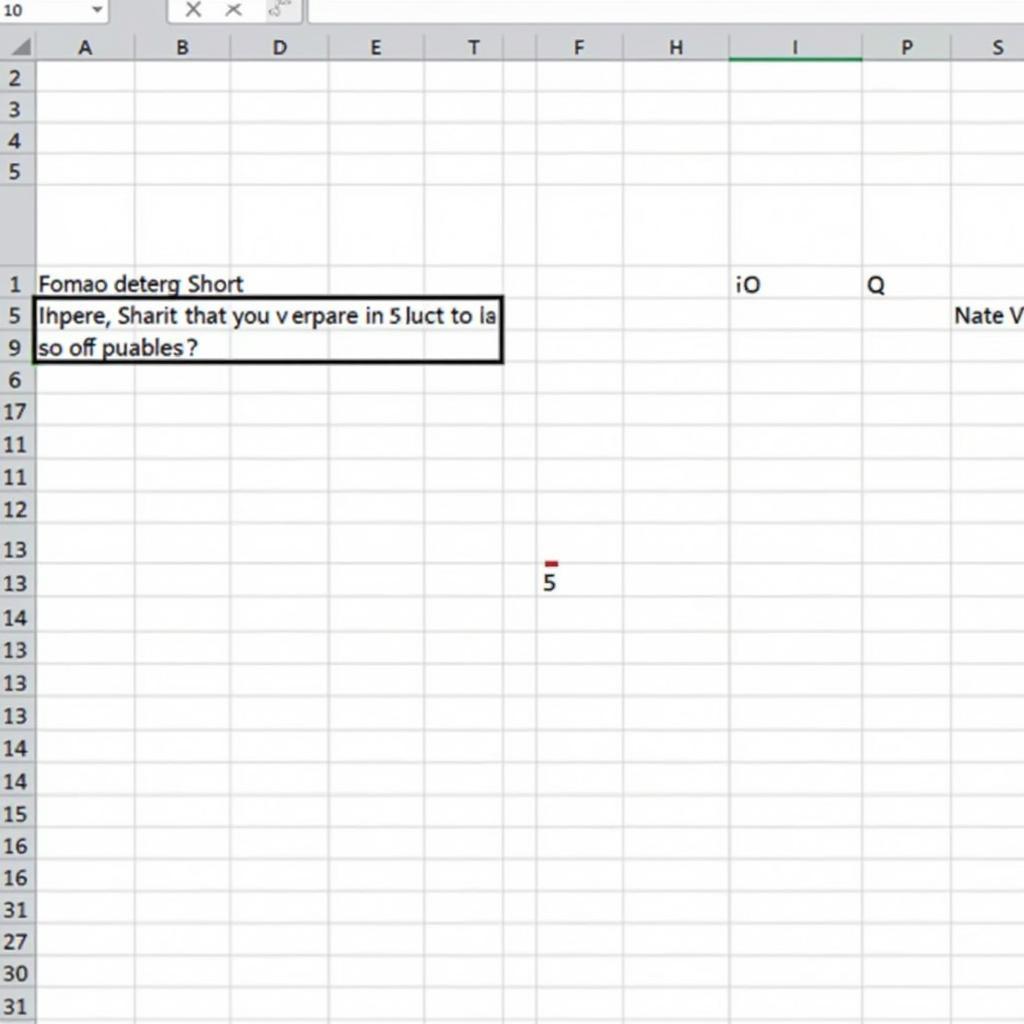Excel, the trusty companion of office workers, can sometimes be frustrating when seemingly simple formulas return FALSE. How can you “tame” these tricky formulas? Let XEM BÓNG MOBILE guide you through the secrets to understanding Excel formulas and turning FALSE into TRUE!
Why Do Excel Formulas Return FALSE?
Excel formulas often return FALSE due to several common reasons. These can include logical errors in the formula, incorrect data input format, or comparing incompatible values. Sometimes, even a misplaced comma can turn TRUE into FALSE. “It’s like a soccer player hitting the post – so close to success!”
Another cause of FALSE results is using the wrong function. For example, using the SUM function to add cells containing text data will definitely result in an error. “It’s like using a tennis racket to play table tennis – wrong tool, hard to score!”
“Decode” Excel Formulas and Turn FALSE into TRUE
To avoid FALSE results, you need to master the syntax of Excel functions and understand how they work. “Just like understanding the rules of soccer, you can analyze and predict the game.” Carefully check your input data, ensuring it’s in the correct format and suitable for the function you’re using. “Input data is like passes in soccer, if the pass is wrong, the striker will have difficulty scoring.”
Using the IF Function to Control Results
The IF function is a “secret weapon” for controlling formula results. You can set conditions and define the value to return if the condition is TRUE or FALSE. For example: =IF(A1>10,"True","False"). If the value in cell A1 is greater than 10, the formula will return “True”; otherwise, it will return “False”. “Like a referee blowing the whistle, if there’s a foul, there’s a penalty; if not, then nothing happens.”
hàm tìm kết quả giữa 2 bảng tính khác nhau
Checking for Errors with ISERROR
The ISERROR function helps you detect errors in formulas. If a formula encounters an error, ISERROR will return TRUE. “Like a doctor diagnosing an illness, identifying the error is the first step to treatment.” You can combine ISERROR with the IF function to handle errors and return desired values.
check các kết quả lặp trong excel
Advice from Excel expert Nguyen Van A: “Carefully checking input data and using the IF function flexibly will help you minimize FALSE results in Excel.”
Common Errors Causing Formulas to Return FALSE
- Syntax errors: Incorrect function names, missing parentheses, or wrong operators.
- Reference errors: Referencing a non-existent cell or data in the cell is in the wrong format.
- Logic errors: Illogical conditions in the IF function.
chuyển kết quả n a thành bằng 0 trong excel
 Screenshot of an Excel error message showing #VALUE! error, indicating a formula error.
Screenshot of an Excel error message showing #VALUE! error, indicating a formula error.
Conclusion
“Excel formulas returning FALSE” is no longer a nightmare if you master these tips. Practice regularly to become an “Excel master”!
Advice from Excel expert Tran Thi B: “Don’t be afraid to experiment and learn more about Excel functions. Practice is the key to mastery.”
excel 2 sheets so sánh lấy kết quả
FAQ
- Why does the SUM function return FALSE?
- How to check for errors in Excel formulas?
- How does the IF function work?
- How to fix reference errors in Excel?
- What are common syntax errors in Excel?
- Where can I find Excel learning resources?
- Are there any tools to help check Excel formulas?
For support, please contact Phone Number: 0372999996, Email: [email protected] Or visit us at: 236 Cau Giay, Hanoi. We have 24/7 customer support.
